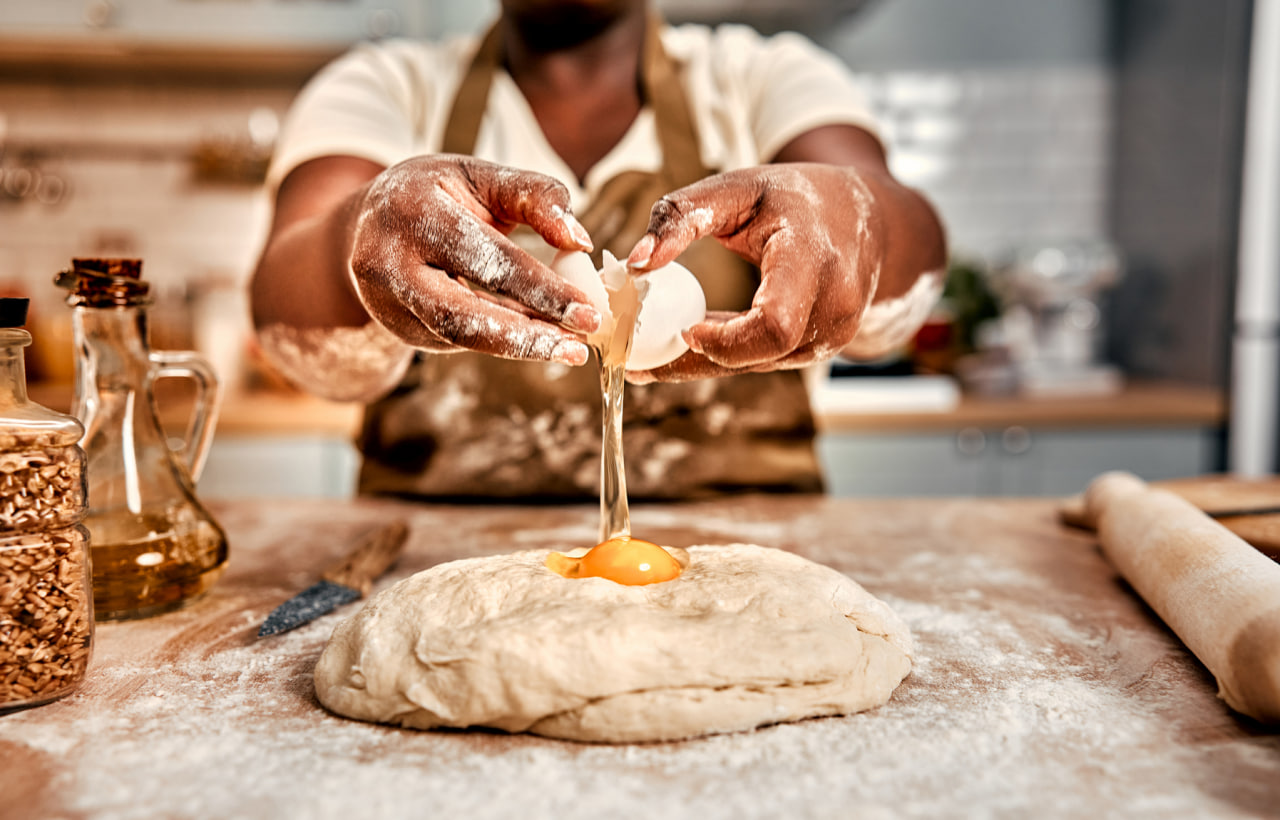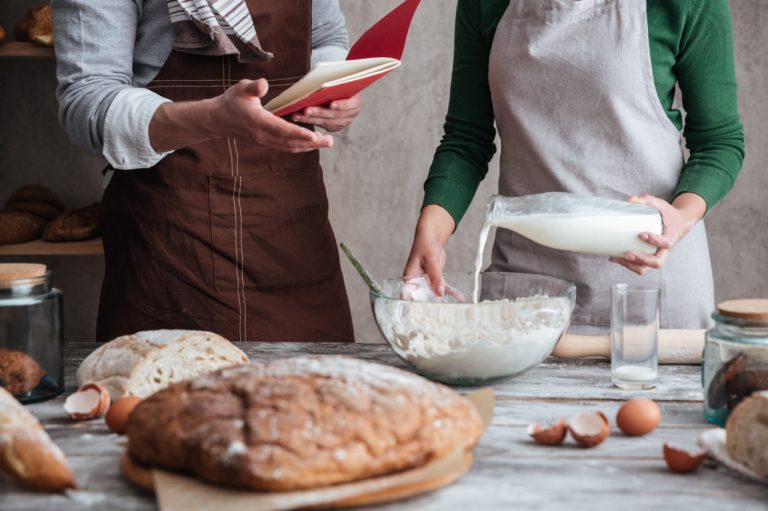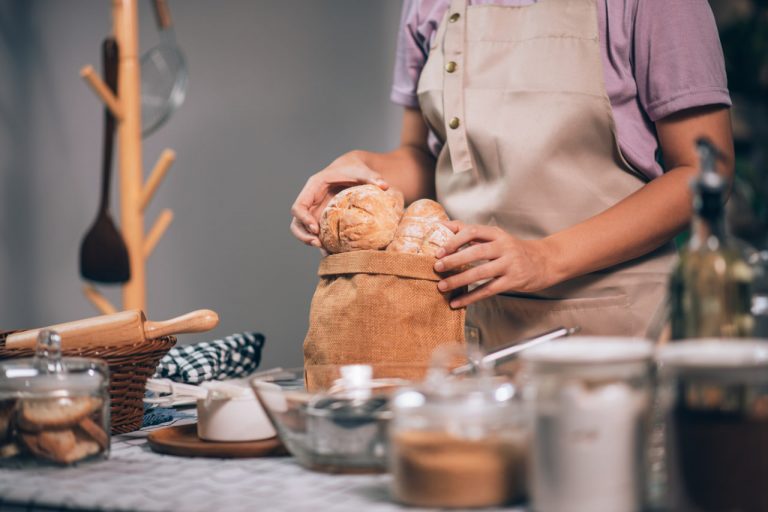Baking bread is both an art and a science, and like any creative process, it doesn’t always go according to plan. From dense loaves to under-proofed dough, breadmaking can sometimes feel like a frustrating journey of trial and error. But the good news is that most breadmaking problems can be solved with a little knowledge, patience, and practice. In this blog, we’ll take a look at some of the most common breadmaking issues and how to troubleshoot and correct them, so you can enjoy consistently perfect loaves every time.
1. My Bread Is Too Dense
One of the most common complaints among home bakers is dense bread. A loaf that lacks airiness or doesn’t rise properly can be disappointing, especially after you’ve put in hours of work. Here are the potential culprits behind a dense loaf and how to fix them:
Possible Causes:
- Under-Developed Gluten: Gluten is the protein network that holds air bubbles in your dough, creating the light and airy crumb. If you don’t knead the dough enough or use the stretch-and-fold method during fermentation, the gluten will not develop properly, leading to a heavy loaf.
- Insufficient Proofing: If the dough hasn’t proofed long enough, the yeast won’t have enough time to produce carbon dioxide, which means your bread won’t rise properly and will end up dense.
- Too Much Flour: Adding too much flour to your dough will result in a stiff, dry dough that lacks the necessary hydration to rise properly.
How to Fix It:
- Knead or Fold More: Make sure you knead the dough properly or use the stretch-and-fold technique during bulk fermentation to develop the gluten. This helps create a strong gluten network, which will trap the carbon dioxide and create a light texture.
- Extend Proofing Time: Ensure your dough is properly proofed. If you’re not sure whether it’s ready, perform the “poke test” — lightly poke the dough with your finger, and if the indentation stays, it’s ready to be baked. If it springs back too quickly, let it proof a little longer.
- Check Your Flour Ratios: Follow the recipe’s flour measurements carefully, especially when using different types of flour. Flour can vary in absorbency depending on the type, so adjust your hydration levels accordingly. A wetter dough often results in a lighter loaf, as long as you can manage the stickiness.
2. My Bread Didn’t Rise Enough
If your bread dough hasn’t risen as much as expected, the loaf will be smaller, denser, and sometimes not as flavorful as it should be. Understanding why this happens can help you avoid this problem in the future.
Possible Causes:
- Inactive Yeast: If you’re using yeast that’s past its expiration date or improperly stored, it might not be active enough to make the dough rise. Similarly, if your water is too hot or too cold when activating the yeast, it could kill the yeast, leading to no rise.
- Under-Proofed Dough: If the dough is under-proofed or didn’t get enough time to ferment, it won’t have fully developed the air bubbles necessary for a good rise.
- Cold Environment: Cold temperatures can slow down the fermentation process significantly, especially if you’re proofing your dough in a chilly environment. This can lead to slow or incomplete rising.
How to Fix It:
- Check the Yeast: Always use fresh, active yeast. If you’re using instant or active dry yeast, make sure it’s properly proofed before using it in the dough. To proof, dissolve a teaspoon of yeast in warm water (100-110°F or 37-43°C) with a pinch of sugar. If the mixture becomes frothy within 5-10 minutes, your yeast is active and ready to go.
- Give It More Time: If you think your dough hasn’t risen enough, give it additional time to ferment and proof. Keep the dough in a warm place, but not too hot (around 75°F or 24°C is ideal), to encourage the yeast to do its work.
- Proof in a Warmer Place: Try proofing the dough in a warmer environment if your kitchen is cold. A warm oven (turned off) with a bowl of hot water inside can help create a cozy environment for the dough to rise. Alternatively, use a proofing box if you have one.
3. My Bread Has a Thick, Hard Crust
While a crispy crust is often desired in artisan bread, it’s easy for it to become too thick or hard, making it difficult to eat or slice. There are several reasons why this might happen.
Possible Causes:
- Overbaking: If your bread is baked too long or at too high a temperature, it will develop an overly thick and hard crust. In some cases, the crust might even become burnt.
- Lack of Steam: Steam in the oven is essential during the first part of the baking process because it helps create a soft crust that will harden as it continues to bake. If there’s no steam, the crust can form too quickly, resulting in a tough, hard shell.
- High Hydration Dough: If you’re baking a bread with a high hydration dough (such as a ciabatta or focaccia), the crust might turn out too hard if the dough isn’t properly handled or the temperature isn’t regulated.
How to Fix It:
- Adjust Baking Time and Temperature: Lower the oven temperature slightly or shorten the baking time. If the crust is becoming too hard, try reducing the time spent in the oven at high heat. You can also check the internal temperature of the bread with a thermometer — it should reach 200-210°F (93-99°C) in the center for most types of bread.
- Use Steam: Steam is essential for creating a thin, crispy crust. You can achieve this by placing a pan of water at the bottom of your oven or spraying the dough with water before baking. Another popular method is to bake bread in a Dutch oven with the lid on for the first part of baking to trap the steam inside.
- Brush with Butter or Oil: If the crust becomes too hard but the inside is cooked to perfection, consider brushing the bread with butter or oil once it comes out of the oven to soften the crust.
4. My Bread Has an Uneven Crumb Structure
A bread loaf that has holes in the wrong places or an uneven crumb structure can be frustrating, especially when you’re looking for that perfect, airy texture. The crumb should be light and filled with small to medium-sized holes evenly distributed throughout.
Possible Causes:
- Overproofing or Underproofing: If the dough is either over-proofed or under-proofed, the crumb structure will suffer. Over-proofed dough can collapse or deflate during baking, leading to a dense, uneven crumb. On the other hand, under-proofed dough will not rise properly, resulting in a tight crumb with irregular holes.
- Over-Kneading or Under-Kneading: Kneading is crucial for developing the gluten network, but if the dough is over-kneaded, it can lead to a tough crumb. Similarly, under-kneading results in weak gluten that cannot trap the gas produced during fermentation.
- Uneven Mixing: If your dough isn’t mixed evenly or there are dry spots of flour, this can cause the dough to ferment unevenly, leading to a crumb with uneven holes and texture.
How to Fix It:
- Check Proofing Times: Ensure your dough is neither over-proofed nor under-proofed. The “poke test” is a helpful way to check if your dough is ready. If the dough springs back quickly, it needs more time. If the indentation stays, it’s ready to be baked.
- Proper Kneading or Folding: Use the proper kneading technique, or consider the stretch-and-fold method during bulk fermentation. This helps strengthen the dough’s gluten and ensures even gas distribution, resulting in a more consistent crumb structure.
- Mix Evenly: Be sure to mix the dough thoroughly from the beginning to ensure that all ingredients are well incorporated. If you’re using a stand mixer, mix on medium speed for 5-7 minutes to properly develop the dough.
5. My Bread Has a Yeasty Flavor
If your bread has an overpowering yeasty flavor or smells too much like fermentation, there might be issues with the fermentation process itself.
Possible Causes:
- Under-Fermentation: If the dough hasn’t fermented long enough, the yeast might not have fully processed the sugars, resulting in an overly yeasty flavor. This can also lead to the bread tasting “raw” or too “doughy.”
- Excessive Yeast: If you’ve used too much yeast or the yeast has been allowed to ferment too quickly, the bread can take on an overly yeasty taste.
How to Fix It:
- Extend Fermentation Time: Allow your dough to ferment longer, either at room temperature or with a slow, cold fermentation (refrigeration). This allows the flavors to develop more naturally and gives the yeast enough time to work without overpowering the taste.
- Use Less Yeast: If you’re finding that your bread is too yeasty, try using less yeast. Artisan bread recipes typically use a lower quantity of yeast, allowing for a slower fermentation process and more complex flavors.




